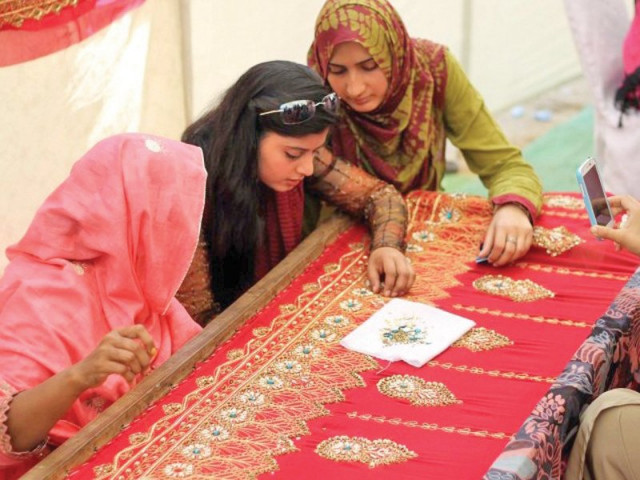Tapping potential: Exploring women entrepreneurship
Foreign experts impart training to local businesswomen .

It is not a surprise to find a large number of women operating small-scale businesses across the country. PHOTO: FILE
For a Pakistani woman entrepreneur to tap into the international market is a rare feat. Businesswomen, who have established themselves predominately in textile products, are even rarer.
In such an environment, it is not a surprise to find a large number of women operating small-scale businesses across the country. They offer products that cater to specific clientele but lack of marketing knowledge puts them at a disadvantage from the outset.
Since Pakistan attained the Generalised System of Preferences (GSP) Plus status, hopes of boosting textile exports have risen. Despite large textile industries, Pakistani handmade products hold a separate appeal.

Trade Development Authority of Pakistan (TDAP), Punjab has already taken an initiative to discover and groom such women entrepreneurs who have excellent handicraft skills.
Besides local training, the authority has enlisted the assistance of European experts to provide necessary training to these entrepreneurs’ who have an aim to expand their business to European markets.
This training process includes ensuring these new entrants are proficient regarding the International Business Publication document. Additionally, training included guidance in marketing, strategy, promotion, action plan, goal-setting, competitiveness and future growth.
Senior Netherlands expert Ria Doolaard Meekers said lack of awareness was a reason behind the minimal growth of women entrepreneurs. “The women entrepreneurs in Pakistan are wonderful, but lack of awareness and knowledge is a reason for their minimal growth,” Meekers told The Express Tribune.
Meekers was invited by the TDAP Punjab chapter to provide necessary education and training to such women and give them a realistic picture on the scope of their products in local as well as European markets.
Meekers was of the opinion that women entrepreneurs in Pakistan have one thing in common — they all start in a small room with just a single product, which they first sell to their family, friends and neighborhood before gradually evolving into bigger rooms, shops and factories as their employee base increases.
While one could sense the feeling of anticipation and unpredictability in the training session, one thing that stood out was passion. These women shared their experiences with zeal, showing huge potential and skill in hand-made products.
Rules, standards and culture in every country are different — each posing a different set of challenges. Additionally, not every country has demand for a certain product. A popular product in Pakistan might be a fail in a European market. “It is important to first get a grip and understanding of the domestic market before moving towards the international ones,” said Meekers.
“I have seen the well-crafted products of Pakistani women and some could be exported immediately,” she said.
Recommendations
While Meekers may have sounded optimistic on the potential Pakstani women entrepreneurs possess, she had a word of caution. She repeated a cliché — the government and institutes needed to cooperate and work together for betterment. Meekers also suggested the women entrepreneurs to develop a network that would enhance people-to-people contact with their counterparts in other countries, form linkages with retailers, trade houses and wholesale buyers. She added that in order to provide women-led businesses with more facilities to sell and promote their products, it is important to organise larger expos twice a year in different parts of the country.
Published in The Express Tribune, June 9th, 2014.
Like Business on Facebook, follow @TribuneBiz on Twitter to stay informed and join in the conversation.


















COMMENTS
Comments are moderated and generally will be posted if they are on-topic and not abusive.
For more information, please see our Comments FAQ